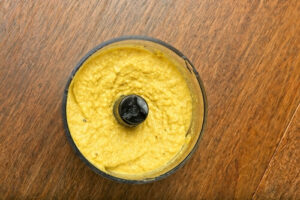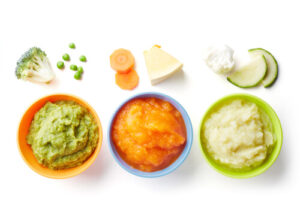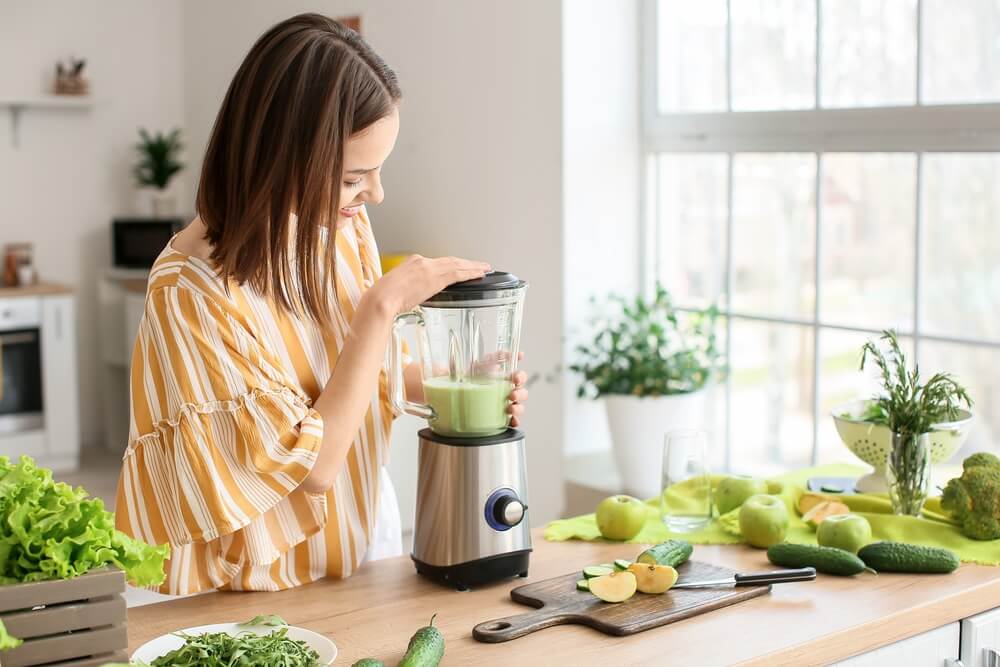In the golden years of life, dietary needs often undergo significant shifts, leading many to explore alternative nutritious and easy-to-consume meal options. Among these, pureed food for the elderly has emerged as a popular choice, seamlessly combining health, taste, and convenience. As the texture softens and the flavors meld, pureed dishes present a delightful culinary experience, ensuring that our seniors meet their nutritional requirements and indulge in the joy of savoring every bite. Dive into the world of pureed delights and discover their many benefits for the aging palate.
How Do You Make Soft Foods For The Elderly?
Making soft foods for the elderly involves considering both the texture and nutritional content of the meals. As swallowing and chewing can become more challenging with age, soft foods offer an easier and safer alternative. Here’s a basic guide on how to prepare soft foods for seniors:
Ingredients Selection: Start with high-quality, fresh ingredients. Prioritize nutrient-dense foods that can offer a balanced mix of protein, healthy fats, fiber, vitamins, and minerals.
Cooking Techniques:
- Steaming: This method retains the most nutrients. Vegetables and fish steam very well.
- Boiling: Suitable for pasta, rice, and hard vegetables like potatoes.
- Poaching: Ideal for eggs, chicken, and fish.
- Baking: Perfect for meats, fish, and some vegetables. Keep them moist by covering them with foil.
Pureeing: Use a blender, food processor, or immersion blender to puree cooked foods. Add broth, milk, or cooking water gradually until you reach the desired texture for a smoother consistency. Season appropriately. Just because it’s pureed doesn’t mean it has to be bland.
Mashing: Some foods, like potatoes, sweet potatoes, avocados, and bananas, can be easily mashed to a soft texture using a fork or potato masher.
Texture Modifying: If pureed food becomes too thin, you can thicken it with mashed potato, instant mashed potato flakes, or commercial food thickeners. A roux (butter and flour mixture) or cornstarch slurry can be used as a thickener for soups.
Include Protein: Soft protein options include tofu, cottage cheese, soft-cooked eggs, yogurt, and pureed meats. Like whey or plant-based, protein powders can be added to smoothies or purees.
Hydrate: Offer beverages between meals. Smoothies, milkshakes, and broths are excellent choices. Ensure they’re not too thick or thin to swallow.
Soft Snacks: Consider snacks like applesauce, pudding, yogurt, and custard.
 Seasoning: The sense of taste can diminish with age. While you should be cautious with salt, don’t be afraid to use herbs, spices, and other flavor enhancers.
Seasoning: The sense of taste can diminish with age. While you should be cautious with salt, don’t be afraid to use herbs, spices, and other flavor enhancers.
Monitor for Allergies and Intolerances: Ensure the elderly person doesn’t have food allergies or intolerances. If they do, adjust recipes accordingly.
Consultation: Always consult with a healthcare or nutrition professional to ensure your prepared meals meet the individual’s specific needs.
Remember, the goal is to make foods that are not only easy to swallow and chew but also tasty and nutritious. With a little creativity, you can prepare a wide range of delicious soft foods that cater to the dietary needs of the elderly.
Why do Elderly People Need Pureed Food?
Elderly individuals may require pureed food for various reasons related to physical and cognitive changes that can accompany aging. Here’s a detailed look at why pureed foods might be necessary for some seniors:
- Dysphagia: One of the most common reasons for recommending pureed foods is dysphagia, or difficulty swallowing. Conditions such as stroke, Parkinson’s disease, Alzheimer’s disease, or general frailty can lead to dysphagia, making regular textured foods risky to consume due to choking hazards.
- Oral Health Issues: Dental problems, including tooth loss, gum disease, ill-fitting dentures, or oral surgeries, can make chewing regular foods painful or challenging. Pureed foods offer a softer alternative that doesn’t require extensive chewing.
- Gastrointestinal Issues: Some elderly individuals may experience digestive problems, making it easier to digest softer, pureed foods. Conditions such as acid reflux or gastroparesis can benefit from smoother food textures.
- Malnutrition: Pureed foods can be made nutrient-dense, helping to address malnutrition issues. When swallowing becomes difficult, some seniors might eat less, leading to insufficient nutrient intake. A pureed diet can be customized to ensure they receive all the essential nutrients.
- Cognitive Impairments: People with advanced dementia or other cognitive disorders might forget how to chew or swallow. In these instances, offering them pureed foods can ensure they still receive the nourishment they need without the cognitive challenge of managing different food textures.
- Safety: Aspiration, where food particles enter the lungs instead of the stomach, can lead to pneumonia, a leading cause of illness and death among the elderly. When prepared with the right consistency, pureed foods can reduce the risk of aspiration.
- Facilitating Medication Intake: Some elderly individuals may have difficulty swallowing pills or capsules. Mixing medications (after consulting with a healthcare provider) into pureed foods can be an effective way to ensure they take their required medicines.
- Taste and Sensory Experience: As people age, their sense of taste can diminish. Pureed foods can be seasoned and flavored to make them more palatable and appealing to seniors.
- Digestive Comfort: For some seniors, softer foods can be easier on the digestive system, reducing the potential for gastrointestinal discomfort.
It’s worth noting that while pureed foods can be beneficial for many elderly individuals, they’re not necessary for all. It’s crucial to consult with healthcare professionals, including speech therapists, nutritionists, and doctors, to determine the most appropriate diet for each individual’s needs.
Puree Diet vs. Soft Diet: What Are Their Differences and Similarities?
A purée diet and a soft diet both aim to make food easier to consume, especially for those with swallowing or chewing difficulties. However, they differ in texture and preparation methods. Here’s a breakdown of their similarities and differences:
Differences:
- Texture: A pureed diet’s main feature is the smooth, homogenous texture. There should be no lumps or chunks that could pose a swallowing risk. Foods in a soft diet are soft in texture but not necessarily blended to a smooth consistency. This diet may include cooked vegetables, soft fruits, tender meats, and pasta.
- Preparation: Purees are foods often blended or processed until they reach a smooth consistency. Liquids like broth, juice, or milk might be added to achieve the desired texture. On the other hand, cooking methods for a soft diet are steaming, boiling, or stewing. Some foods might be lightly mashed or cut into small pieces.
- Use: A soft diet is recommended for those with moderate chewing or swallowing difficulties or after surgeries affecting the digestive tract or mouth. Pureed food is typically recommended for those with severe dysphagia or those who are at a high risk of choking or aspiration.
Similarities:
- Nutritional Needs: Both diet types should be nutritionally balanced, ensuring that individuals receive all necessary nutrients.
- Safety: Both diets are designed with safety in mind, aiming to reduce the risk of choking or aspiration.
Devices used to puree food
Using a blender or food processor? Various devices can be used to puree food, ranging from manual tools to sophisticated electric appliances. Here’s a list of common devices used for this purpose:
- Blender:
Standard Blender: Best for liquid-based foods or when you’re aiming to achieve a smooth, even texture. They can handle large quantities and are ideal for soups, smoothies, and sauces.
High-speed Blender: Devices like the Vitamix or Blendtec can puree even tougher ingredients like raw vegetables or nuts without needing much added liquid.
 Food Processor: Suitable for bulkier foods or when a slightly thicker texture is desired. It’s great for making hummus, dips, and even dough.
Food Processor: Suitable for bulkier foods or when a slightly thicker texture is desired. It’s great for making hummus, dips, and even dough.- Immersion Blender (Stick Blender): This handheld device can be immersed directly into pots or bowls. It’s convenient for pureeing soups directly in the cooking pot or for smaller batches of puree.
- Hand Mixer: While primarily used for baking, some hand mixers come with attachments that can be used for pureeing softer foods.
- Potato Masher: A manual tool mainly used for mashed potatoes but can also be used for other soft vegetables like carrots or turnips. The result will be less smooth than electric devices but can be suitable for those who prefer a bit of texture.
- Food Mill: This hand-operated device strains and purees food at the same time. It’s particularly useful for foods like tomatoes, where seeds and skins are separated from the puree.
- Ricer: Resembling a giant garlic press, a ricer is another manual tool that’s primarily used for potatoes. It gives a fine, fluffy texture that’s smoother than what you’d get from a masher but less liquidy than a blender.
- Mortar and Pestle: This ancient tool can grind and puree foods. It requires more effort but is excellent for making pastes, sauces, and crushing herbs and spices.
- Tamis (or Drum Sieve): After using one of the above methods, food can be pushed through a tamis to achieve an extra-smooth texture, which is especially useful for fine dining dishes.
- Sieve or Strainer: Using a spatula or the back of a spoon, pureed food can be pressed through a sieve to remove any lumps or undesired particles, refining the texture.
The choice of device often depends on the type and quantity of food you’re working with, the desired texture, and personal preference. Some might also prioritize ease of cleaning or storage space when choosing a device.
Care and Storage of Pureed foods
Storing and caring for pureed food correctly is crucial to preserve its nutritional value and ensure safety. Here’s a guide to storing and caring for pureed food:
Storing Pureed Food:
- Cooling: Before storing pureed food, allow it to cool to room temperature. Placing hot food directly in the refrigerator can lower the fridge’s internal temperature, putting other stored items at risk.
- Refrigeration: Once cooled, transfer the pureed food into airtight containers and store it in the refrigerator. Most pureed foods will last 3-4 days in the fridge.
- Freezing: For longer storage, portion out the pureed food into freezer-safe containers or bags. Consider portioning into individual meal sizes for convenience. Leave some space at the top of the containers to allow for expansion when the food freezes. Label containers with the date and type of food. Pureed food can typically be stored in the freezer for 1-3 months, depending on the ingredients.
- Thawing: If you’ve frozen pureed food, move it to the refrigerator for slow and safe thawing, usually for 12-24 hours. Alternatively, you can use the defrost setting on a microwave.
Caring for Pureed Food:
- Reheating: Always reheat thawed or refrigerated pureed food thoroughly. Whether using a microwave or stovetop, ensure the food is evenly heated. Stir periodically during reheating. Before serving, check the temperature to ensure it’s warm but not scalding.
- Avoid Repeated Reheating: Only reheat the portion of pureed food you intend to consume. Repeatedly reheating and cooling can degrade the food’s quality and increase the risk of bacterial growth.
- Check for Spoilage: Before reheating and consuming, check stored pureed food for any signs of spoilage like an off-smell, mold, or unusual discoloration.
- Maintain Cleanliness: When preparing, storing, or serving pureed food, always ensure utensils, containers, and preparation surfaces are clean to prevent contamination.
- Consistency Check: After storing and before serving, check the consistency of the pureed food. Sometimes, it might thicken upon storage. You can adjust the consistency by adding a little water, broth, or other suitable liquids and mixing well.
- Nutrient Retention: Over time, some nutrients can degrade. Consume refrigerated purees within a few days and use frozen ones within the recommended timeframe to ensure maximum nutritional benefits.
Remember, the primary objective in storing and caring for pureed food is safety. Proper storage techniques and ensuring thorough reheating can reduce the risk of foodborne illnesses and ensure the meal remains tasty and nutritious.
Tips for Adding Calories to Your Pureed Food Recipes
Cook food (using the method of choice) until very soft and tender, if needed. For individuals on a purée diet who need to increase their caloric intake – whether due to medical reasons, weight gain goals, or to counteract unintentional weight loss – there are numerous ways to enhance the calorie content without increasing the volume of food consumed significantly. Whether using a food processor or blender, here are some tips to add calories when you prepare pureed foods:
- Use Full-Fat Dairy: Instead of skim or low-fat varieties, use full-fat milk, cream, yogurt, or sour cream. For instance, when pureeing soups or making smoothies, use full-fat milk or even cream for a richer, calorie-dense result.
- Add Healthy Oils: Olive oil, avocado oil, flaxseed oil, and coconut oil can be incorporated into pureed dishes. Drizzle or mix them into soups with chicken broth, mashed vegetables, or grains to enhance calorie content.
- Nut Butter: Incorporate almond, peanut, or cashew butter into your purees. They’re not only calorie-dense but also packed with protein and healthy fats.
 Avocado: This creamy fruit is both calorie-dense and packed with beneficial fats. Blend it into soups, mix it with other pureed fruits, or even use it in desserts like chocolate-avocado mousse.
Avocado: This creamy fruit is both calorie-dense and packed with beneficial fats. Blend it into soups, mix it with other pureed fruits, or even use it in desserts like chocolate-avocado mousse.- Creamy Sauces: When pureeing food with vegetables or meats, consider adding cheese sauces, béchamel, or other creamy sauces to increase the calorie content.
- Protein Powders: For those needing extra protein and calories, protein powders can be mixed into smoothies, oatmeal, or other pureed dishes.
- Eggs: Eggs are a good source of protein and calories. You can blend soft-cooked eggs into purees or add egg yolks to various dishes for a caloric boost.
- Honey and Maple Syrup: For a sweet touch, drizzle natural sweeteners like honey or maple syrup on top of pureed fruits or desserts. They add quick calories and enhance flavor.
- Whey Powder: Adding whey powder can boost your puree’s protein and calorie content.
- Grains: Incorporate calorie-rich grains like quinoa, rice, or oats into your delicious pureed meals. They can be cooked, blended, and mixed with other ingredients for a wholesome meal.
- Seed Butter and Seeds: Chia seeds, flaxseeds, sunflower seeds, and sesame seeds can be ground and added to your purees. Seed butter like tahini (sesame seed butter) can also be mixed in.
- Coconut: Use full-fat coconut milk in purees, or add unsweetened shredded coconut to dishes for extra flavor and calories.
- Dried Fruits: While they can be tricky to puree due to their sticky nature, soaking them beforehand can help. Dried fruits like dates, raisins, or apricots can be a calorie-rich addition to desserts or breakfast purees.
When adding calorie boosters, consider the individual’s nutritional needs, potential allergies, and preferences. With a little extra work, you can continue to make nutritious and delicious pureed food diet for your loved one. Consulting with a registered dietitian can provide tailored guidance for those with specific health concerns or dietary restrictions.
References:
https://www.mskcc.org/cancer-care/patient-education/pureed-and-mechanical-soft-diets
https://healthreportlive.com/pureed-food/
https://www.ncbi.nlm.nih.gov/pmc/articles/PMC8628769/
https://www.carewell.com/resources/blog/pureed-food-for-adults/



More Stories
Thickened Drinks for the Elderly: Enhancing Safety and Hydration
Homemade Protein Shakes for Elderly: A Nutritious Boost for Aging Health
What Causes Excessive Drooling in the Elderly People? Understanding the Underlying Factors